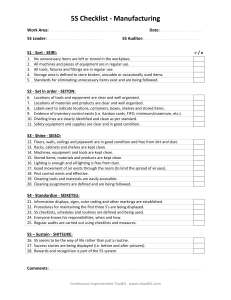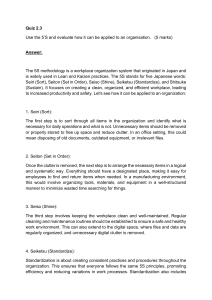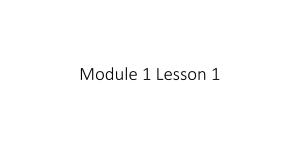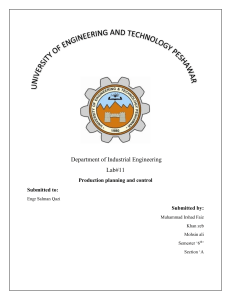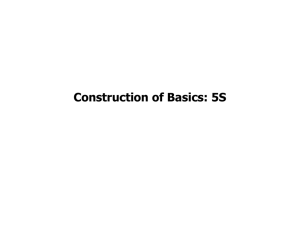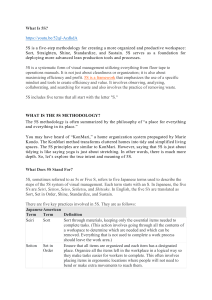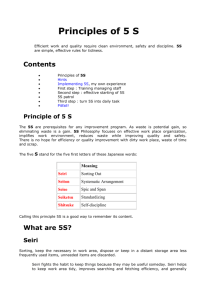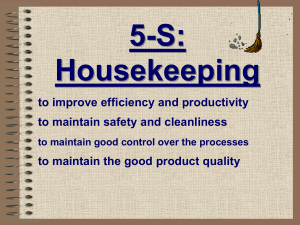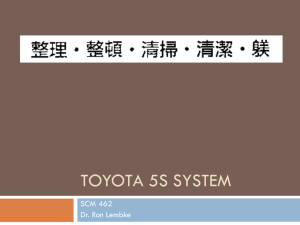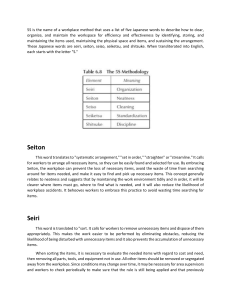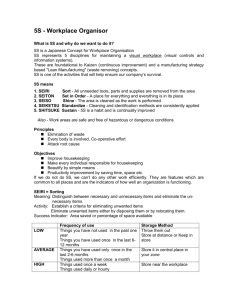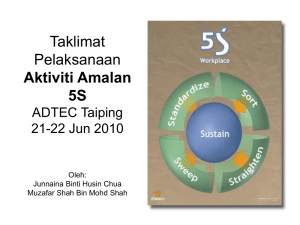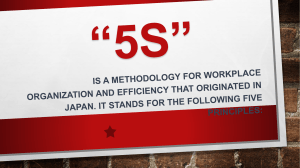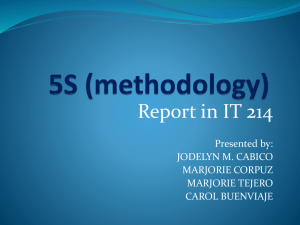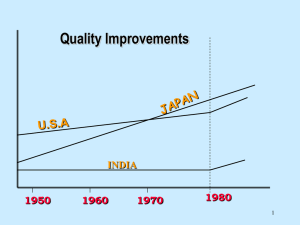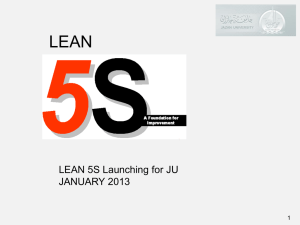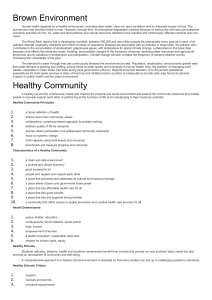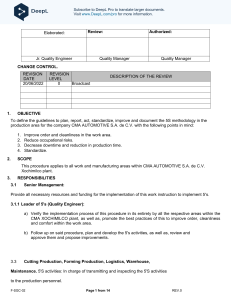five s's
advertisement
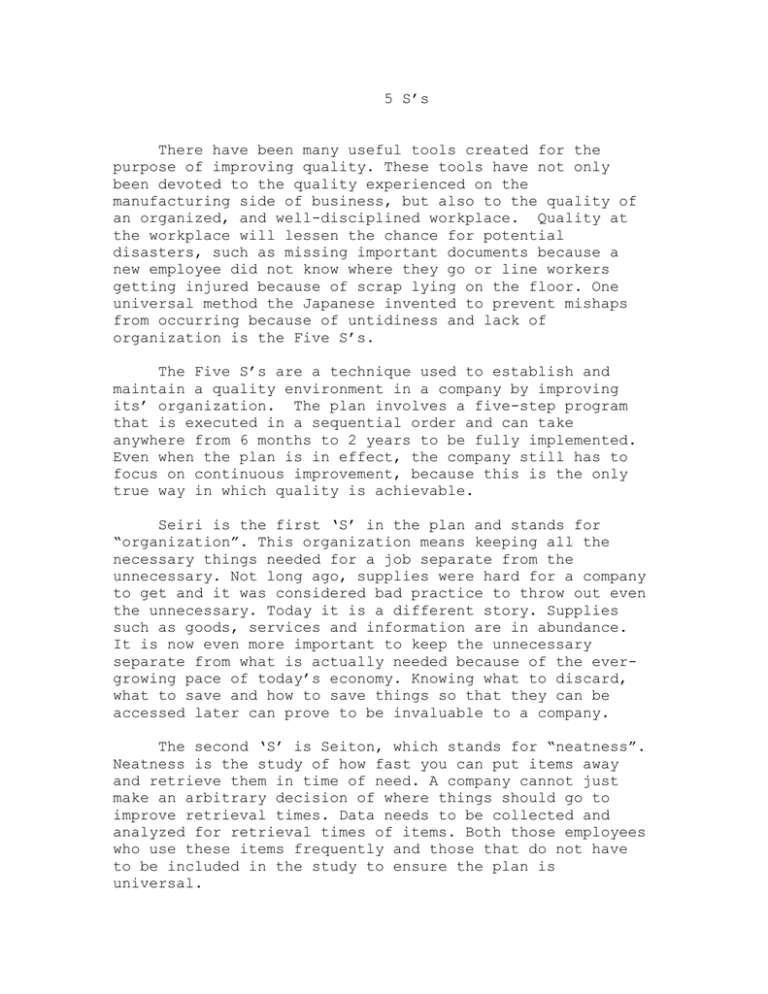
5 S’s There have been many useful tools created for the purpose of improving quality. These tools have not only been devoted to the quality experienced on the manufacturing side of business, but also to the quality of an organized, and well-disciplined workplace. Quality at the workplace will lessen the chance for potential disasters, such as missing important documents because a new employee did not know where they go or line workers getting injured because of scrap lying on the floor. One universal method the Japanese invented to prevent mishaps from occurring because of untidiness and lack of organization is the Five S’s. The Five S’s are a technique used to establish and maintain a quality environment in a company by improving its’ organization. The plan involves a five-step program that is executed in a sequential order and can take anywhere from 6 months to 2 years to be fully implemented. Even when the plan is in effect, the company still has to focus on continuous improvement, because this is the only true way in which quality is achievable. Seiri is the first ‘S’ in the plan and stands for “organization”. This organization means keeping all the necessary things needed for a job separate from the unnecessary. Not long ago, supplies were hard for a company to get and it was considered bad practice to throw out even the unnecessary. Today it is a different story. Supplies such as goods, services and information are in abundance. It is now even more important to keep the unnecessary separate from what is actually needed because of the evergrowing pace of today’s economy. Knowing what to discard, what to save and how to save things so that they can be accessed later can prove to be invaluable to a company. The second ‘S’ is Seiton, which stands for “neatness”. Neatness is the study of how fast you can put items away and retrieve them in time of need. A company cannot just make an arbitrary decision of where things should go to improve retrieval times. Data needs to be collected and analyzed for retrieval times of items. Both those employees who use these items frequently and those that do not have to be included in the study to ensure the plan is universal. The third ‘S’, Seiso, means “cleaning”. This should be participated in by everyone from the C.E.O. to the janitor. This is why the residential areas in Japan do not need street cleaners. The Japanese know that every family is responsible for cleaning not only their homes but also the surrounding area. It would be helpful to use graphs when applying Seiso to a company/factory. These graphs should include everyone’s individual responsibilities and eliminate any gray areas. This is to avoid arguments erupting between employees about cleaning responsibilities. Seiketsu is the fourth ‘S’ and stands for “standardization”. Being standardized is the daily practice of the first three S’s: Seiri, Seiton, and Seiso. In this step visual management is emphasized. Visual management is used to maintain an orderly work environment where employees will have quicker and safer access to items that are needed to complete their jobs. Color-coding is often used during this step as a reminder to employees of where items belong. If order is not continually stressed, disorder will result and create an unfriendly work atmosphere, which will only make life at the job undesirable. The fifth and final ‘S’ is Shitsuke. This translates to “discipline”. Discipline means instilling the ability of doing things the way that they are supposed to be done. Bad habits will be broken by teaching all employees what has to be done and by having them practice these good habits. United Electric of Watertown, MA (UE) has implemented this process and has seen real results. For Seiri, UE asked its employees to color tag items in the factory depending on its progress at that time. For Seiton, the factory was marked with lines on the floor and wall to designate where items belonged such as brooms and safety equipment. Cleaning tasks, or Seiso, were distributed among employees depending on what department they worked for. For Seiketsu and Shitsuke, a Five-S patrol was organized to oversee, and to answer questions that may arise. Through use of the Five S’s, UE eliminated unnecessary clutter, established a location for all items, enhanced the cleanliness of the work environment, and improved overall safety. This is just one of many success stories for the use of the Five S’s. Clearly, the Five S’s are a tool that can help improve both the quality of the products and of the workplace. However, this process is not easy to be implemented. It takes great effort on the part of all employees, and even more so on the management. If they do not follow and enforce the rules, the rest will surely not and return to bad habits. For more information on this subject please visit
